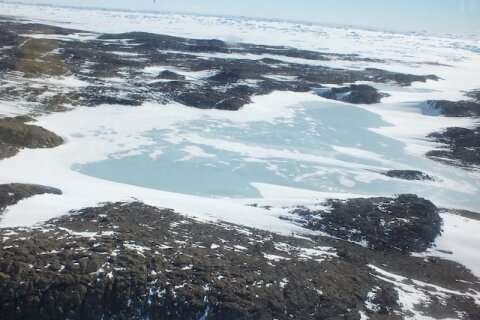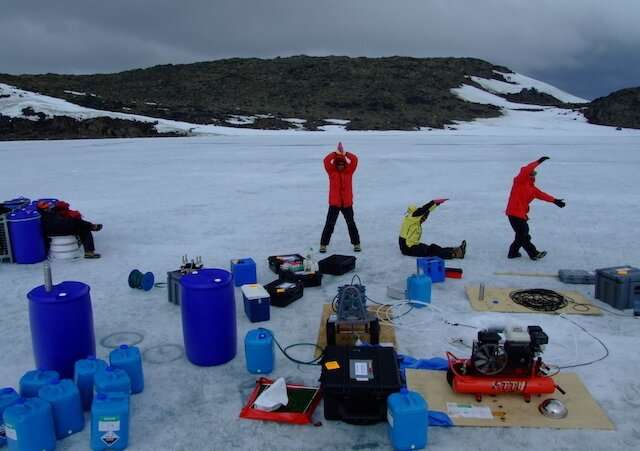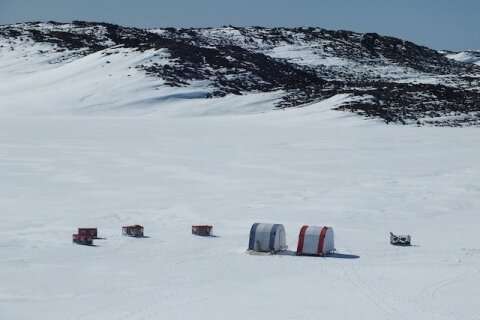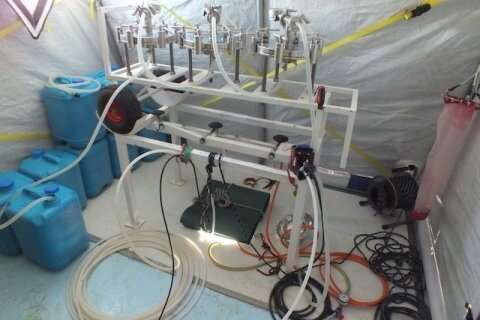Aerial view of Ace Lake while it’s frozen. The lake is 24 metres deep. Credit: Rick Cavicchioli
UNSW Science Professor Rick Cavicchioli is an expert in microbes and why they are so important—just last year, he led an urgent call for the world to stop ignoring this "unseen majority" in Earth's biodiversity and ecosystem when addressing climate change.
In their widely covered and discussed scientists' warning, Prof Cavicchioli and researchers around the world raised awareness both for how microbes can influence climate change and how they will be impacted by it—calling for including microbes in climate change research, increasing the use of research involving innovative technologies, and improving education in classrooms.
Now, Prof Cavicchioli has published another important piece on microbes—this time, a research paper that has been more than a decade in the making: after three Antarctic missions, including one that ran for 18 months, plus three years of bioinformatics analysis, the scientists can now reveal the secrets of Ace Lake's microbes.
In the paper, Prof Cavicchioli and team show how these microbes have adapted to the polar light cycle. The researchers found that two types of microbes—green sulfur bacteria (GSB) and cyanobacteria—were most abundant in the lake, and that they were highly influenced by light availability. The GSB decreased in numbers in winter and bounced back to higher levels in spring.
The researchers believe that the GSB in the lake have evolved specifically to life in Antarctica. Because they are specialized, the research team predicts that the same GSB will be found in other Antarctic aquatic systems, and they are currently doing research now to find out if it is true. One thing that concerns the scientists is the threat from introduced (invasive) viruses that could destroy the GSB, thereby perturbing the whole lake ecosystem.
-
The team’s first expedition took place in summer 2006. Credit: Rick Cavicchioli
-
The sampling site pictured here was captured on the team’s third and biggest expedition, which started in 2013. Credit: Rick Cavicchioli
-
The team’s sampling gear in one of the mobile work shelters. Credit: Rick Cavicchioli
More information: Pratibha Panwar et al. Influence of the polar light cycle on seasonal dynamics of an Antarctic lake microbial community, Microbiome (2020). DOI: 10.1186/s40168-020-00889-8
Provided by University of New South Wales



























